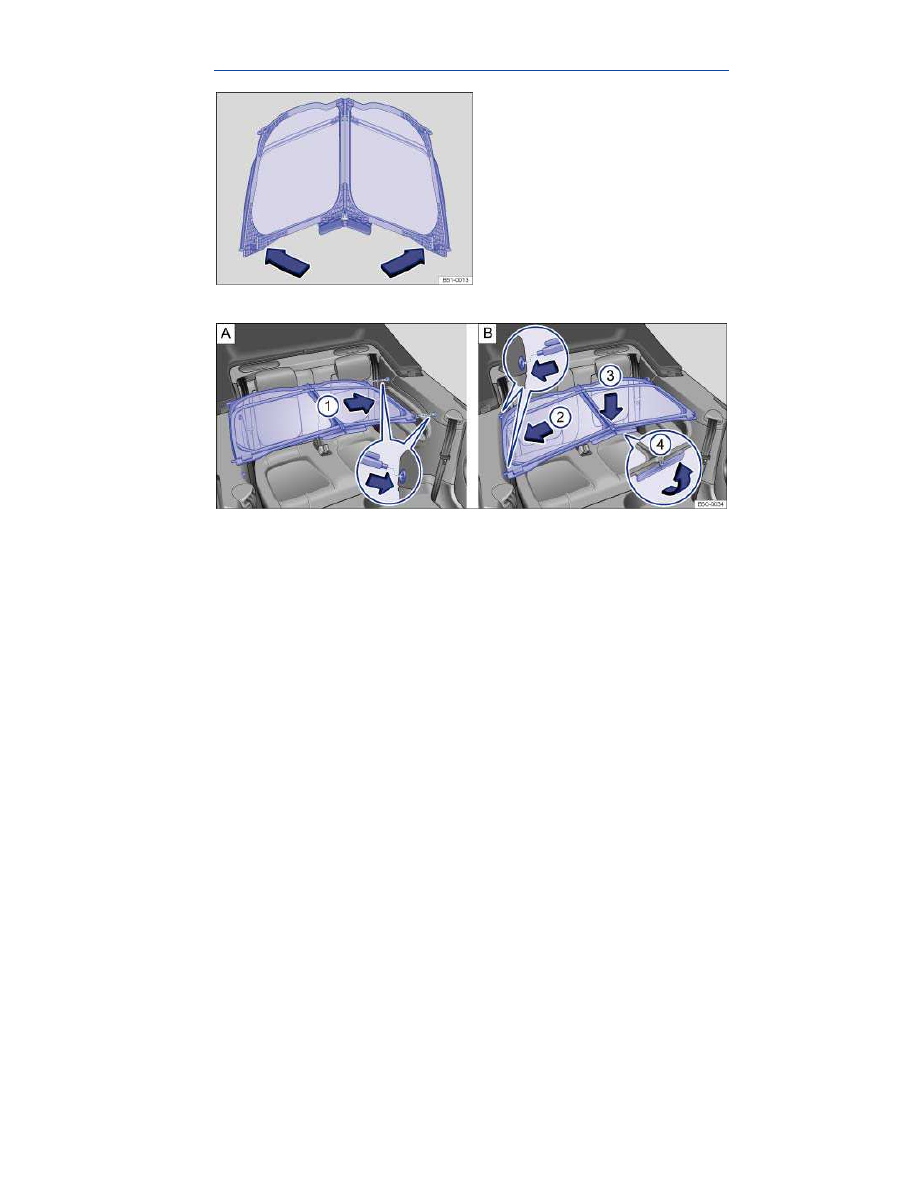Volkswagen Beetle Convertible (2015 year). Manual - part 6

Installing and removing the wind blocker
Fig. 38 Unfolding the wind blocker.
Fig. 39 A: Sliding in the bars on the wind blocker. B: Sliding in the locking pins.
The wind blocker, if equipped, is in a storage compartment in the vehicle's luggage compartment.
You can close the convertible top even when the wind blocker is installed.
Unfolding the wind blocker
Folding the wind blocker outward before installing it is the easiest way to get it into the correct position
for installation.
Remove the wind blocker from the luggage compartment
⇒ Removing the wind blocker from the
luggage compartment and storing.
Fold both side sections outward in the direction of the arrows
⇒
fig. 38
until they lock into place.
Installing the wind blocker
The wind blocker is installed correctly when the longer side faces toward the front and the wind block-
er frame is on top.
Insert both pins on the driver side of the wind blocker into the holes in the side trim panel above the
rear seats
⇒
fig. 39
A
(1)
(magnified area).
Fold the handle
⇒
fig. 39
B
(4)
at the front center of the wind blocker upward in the direction of the
arrow and hold it in place.
Pull the section of the wind blocker that is facing the front passenger side upward slightly.